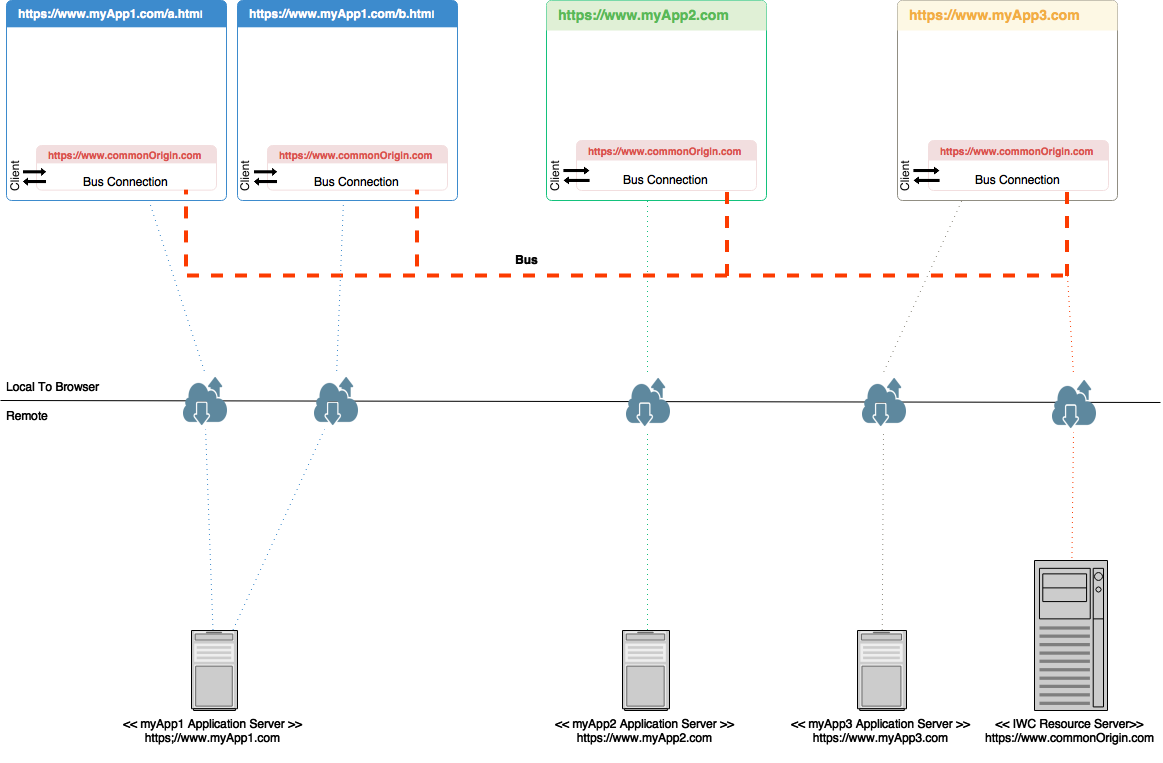- Introduction
- 1. Client (Application Developers)
- 2. Bus (Platform Hosts)
- 3. FAQs
- 4. Performance Findings
- Published using GitBook
Overview
The IWC is composed of two components, a client and a bus.

Client
The client component of the IWC is standard amongst all IWC instances. It is a library that applications use to connect to and make requests on any given bus. To connect to a bus, the client library opens the desired bus in an invisible iFrame. In order to talk across the domain of the widget and the domain of the bus, the client and bus components have a defined protocol for making cross origin requests.
The client component resides in the domain of the application, while the bus component resides in the domain hosting the bus. In some deployment instances this may be the same domain.
Application developers should follow the Client Documentation to get their applications configured to use the IWC client and learn about the various IWC api functionality.
Bus
The bus component of the IWC acts as a local network for clients to communicate through.
While each client's connection to the network opens an instance of the bus component in an iFrame, distributed consensus algorithms are used to determine that only one instance of the bus component is running. When said bus component becomes unavailable, the consensus algorithms are used to redirect IWC traffic to a different bus component.
Platform hosts should follow the Bus Documentation to understand how to interface the IWC bus with their backend, configure deployments, and enforce policies.
A running bus component communicates with its remote server to gather information regarding available applications, preferences, persisted data and permission level to enhance functionality of clients (widgets) connected. More information on communication with the remote server can be found in the Server communications section.
A client (widget) can only communicate with other clients(widgets) connected to the same bus, this is due to the security measures put in place for [cross-origin resource sharing(CORS)] (http://www.w3.org/TR/cors/). Bridging two buses together (joining two bridge domains) is possible, but not implemented at this time.